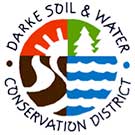|

 |
Darke Southwest Conservation District
Assistance available to protect privately owned Wetland Habitat
Sign-up Deadline is March 27, 2020
COLUMBUS, OH, Feb. 14, 2020 – The U.S. Department of Agriculture’s
Natural Resources Conservation Service (NRCS) encourages people and
groups wanting to restore and protect critical wetlands to consider
enrolling their property into conservation easements.
This year, NRCS will invest in technical and financial assistance to
help private landowners, tribes and other groups protect these valuable
lands. Efforts will be focused on restoring previously drained
agricultural lands and protecting the restored wetlands with easements.
Landowners are financially compensated for enrolling their land in
easements.
“Protecting these lands preserves Ohio’s heritage, natural resources
and open space,” said Barbara Baker, NRCS Assistant State
Conservationist in Ohio. “Easements are an important tool for people
who are trying to preserve the land for future generations.”
The Agricultural Conservation Easement Program (ACEP) utilizes the
Wetland Reserve Easement (WRE) component of the program. Applications
for ACEP-WRE are accepted on a continuous basis. Applications signed
and submitted to NRCS by the ranking and funding deadline will be
evaluated for fiscal year 2020 funding. The application deadline for
this year is March 27, 2020.
Through ACEP wetland reserve easements, NRCS helps landowners restore
and protect wetland ecosystems. Wetlands are one of nature’s most
productive ecosystems providing many ecological, societal and economic
benefits.
In the 1700s, wetlands covered 5 million acres of Ohio, primarily in
the northwestern part of the State, referred to as the “Great Black
Swamp.” Competing land uses resulted in a 90 percent loss of wetlands
by the late 1900s. Since 2005, NRCS has assisted landowners in
restoring more than 25,000 acres of Ohio’s wetlands.
“Wetlands provide many benefits, including critical habitat for a wide
array of wildlife species. They also store floodwaters, clean and
recharge groundwater, sequester carbon, trap sediment, and filter
pollutants for clean water,” said Baker.
“Seventy-five percent of the nation's wetlands are situated on private
and tribal lands,” Baker added. Last year, Ohio landowners restored 600
acres of wetlands through ACEP. Landowners can choose either a
permanent or 30-year wetland conservation easement.
Eligible lands include farmed or converted wetlands that can
successfully be restored, croplands or grasslands subject to flooding,
previously restored wetlands, and riparian areas that link protected
wetland areas. As part of the easement, NRCS and the landowner work
together to develop a plan for the restoration and maintenance of the
wetland.
Ohio landowners interested in wetland reserve easements and partners
interested in agricultural easements should contact their local USDA
Service Center.
To learn more about ACEP and other technical and financial assistance
available through NRCS conservation programs, visit Get Started with
NRCS.
|
|
|
|

